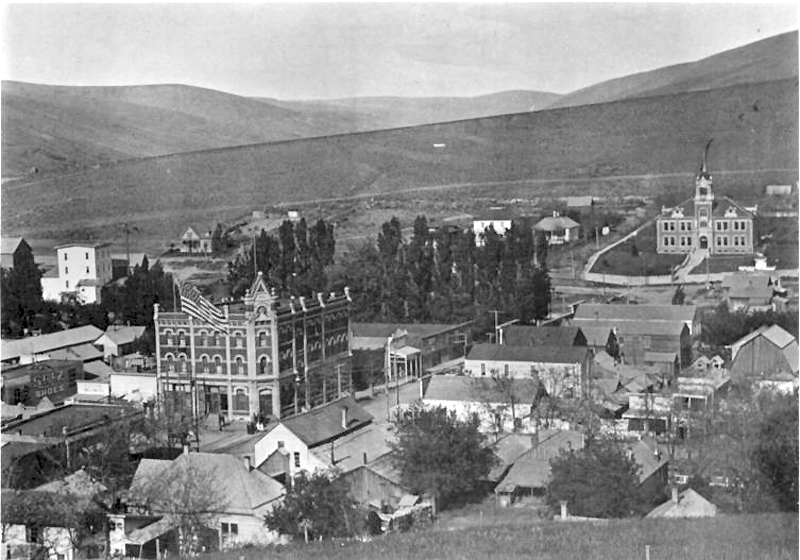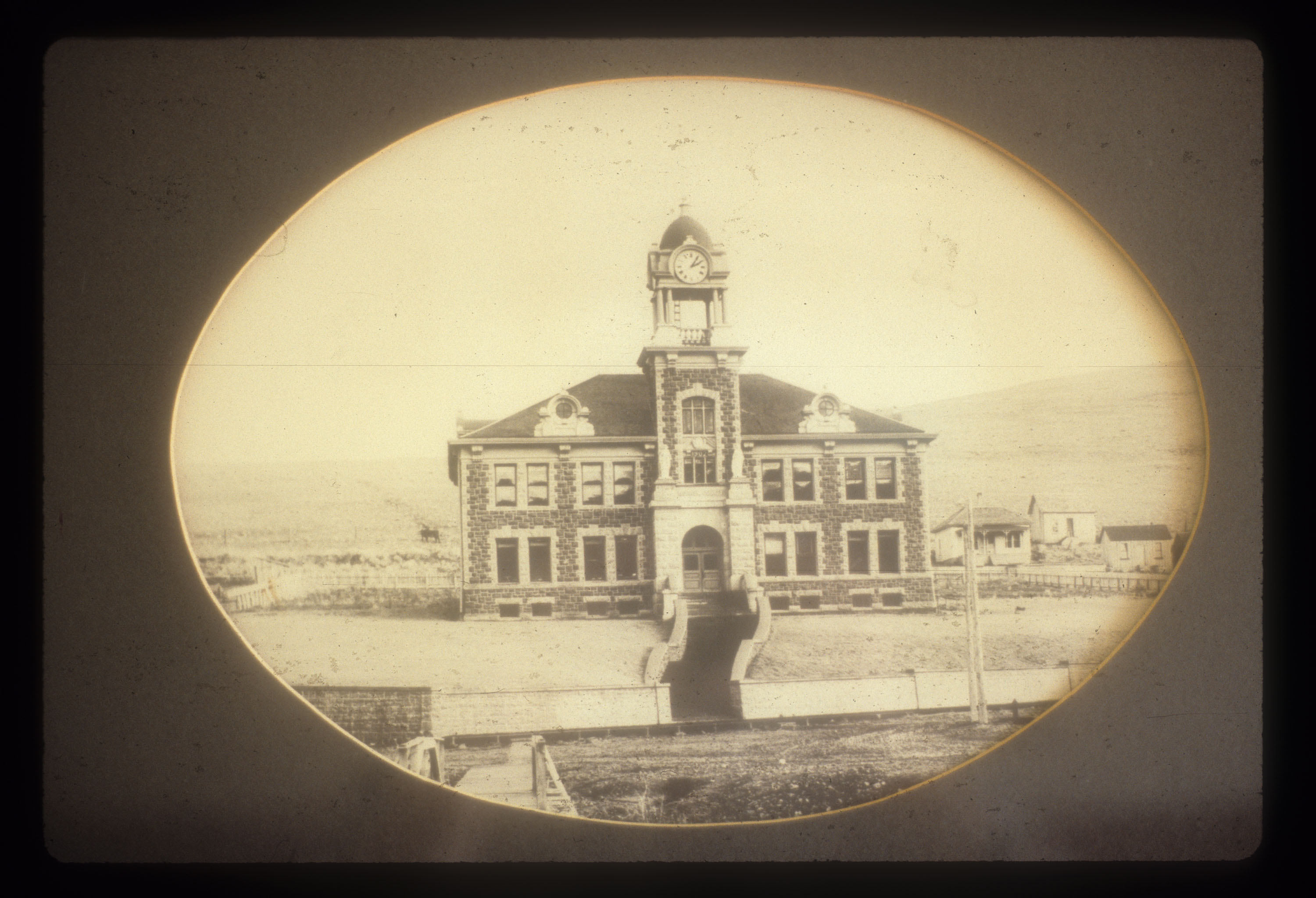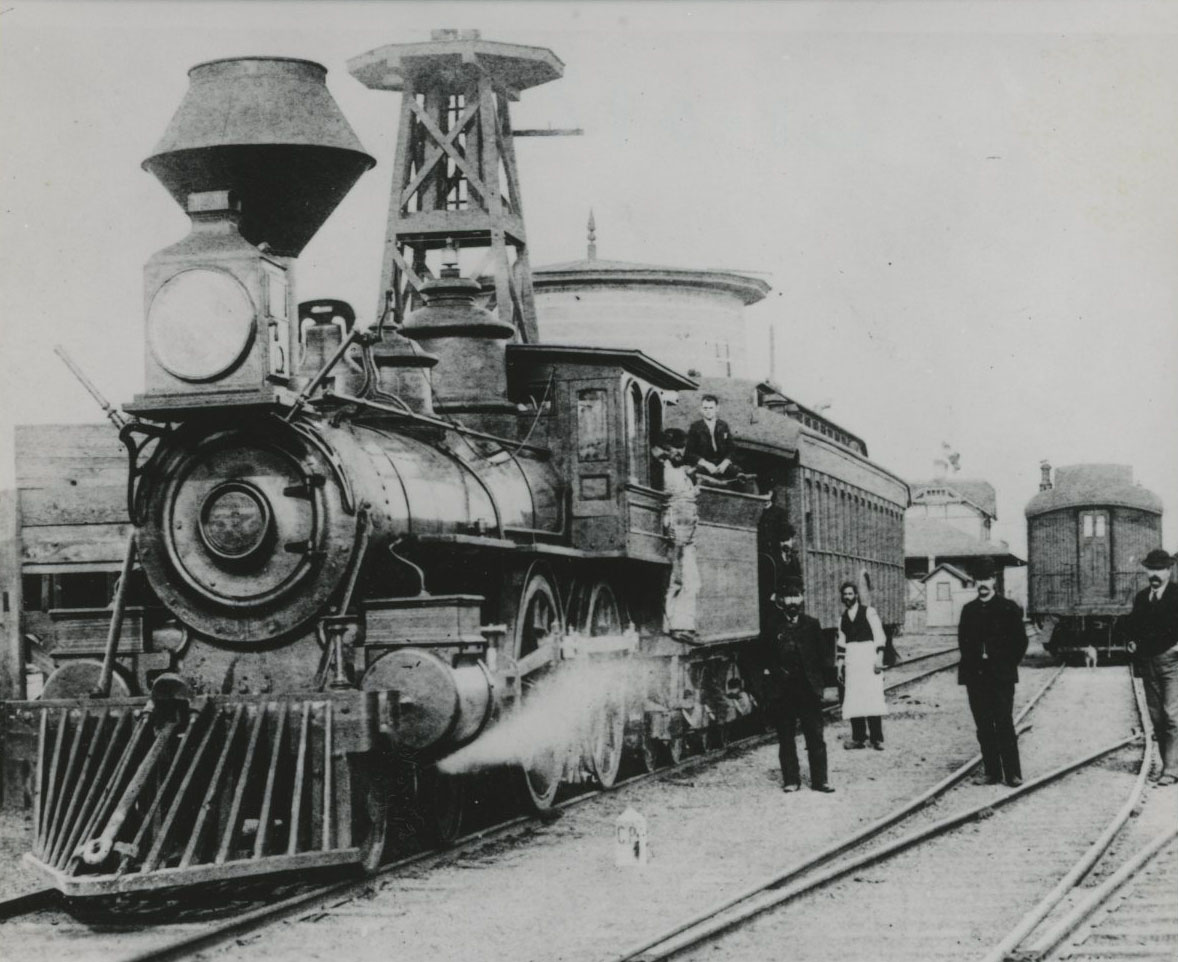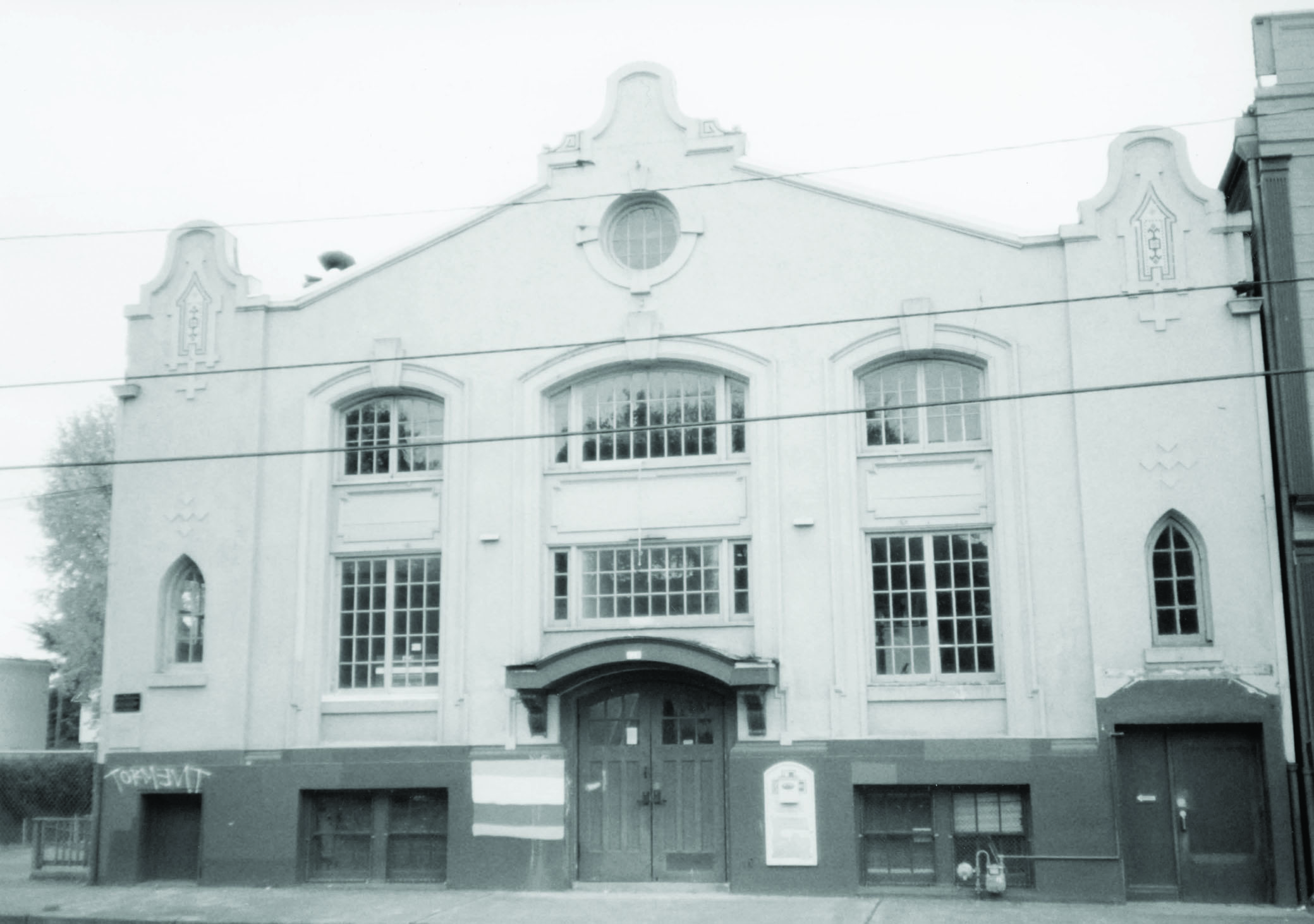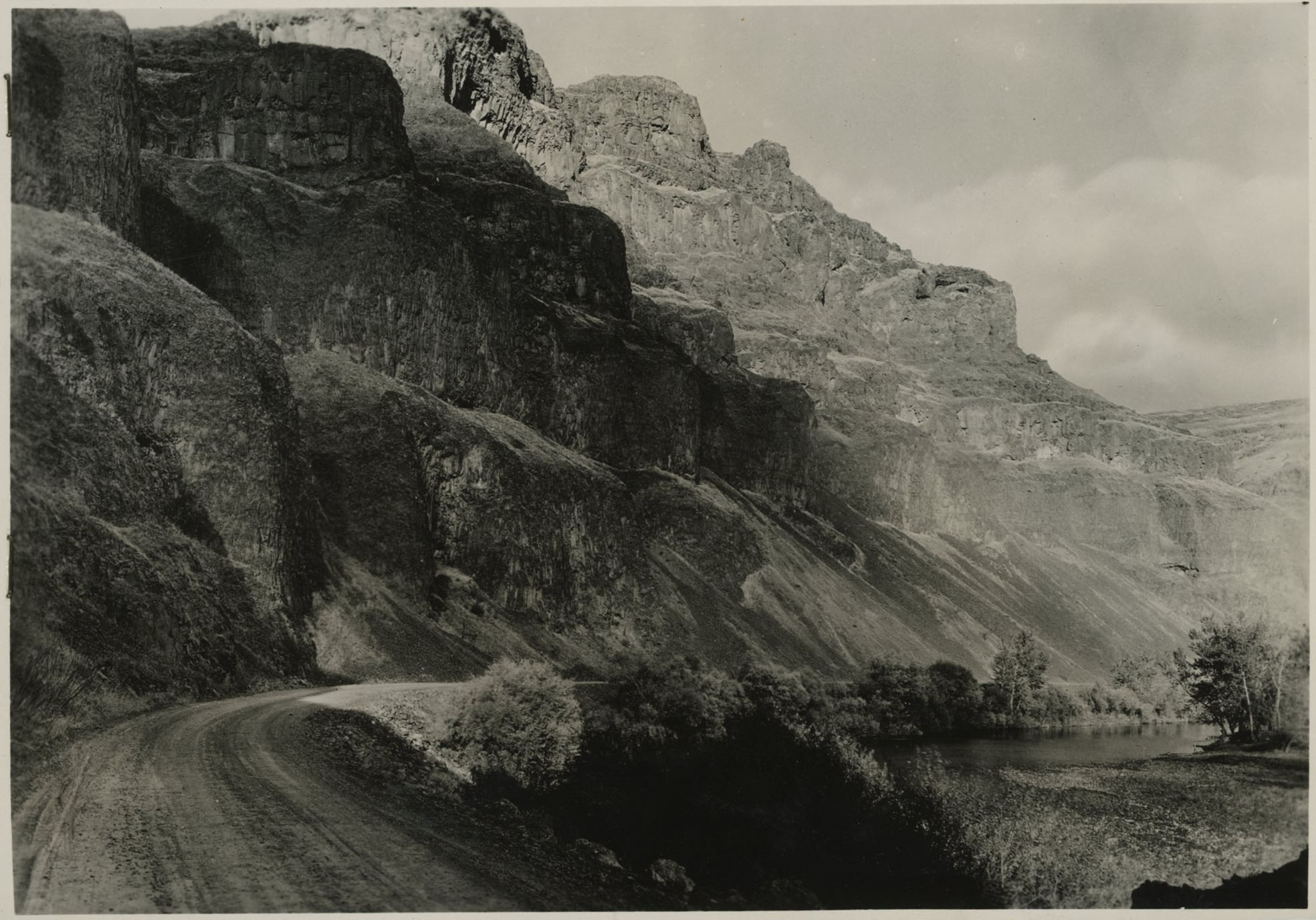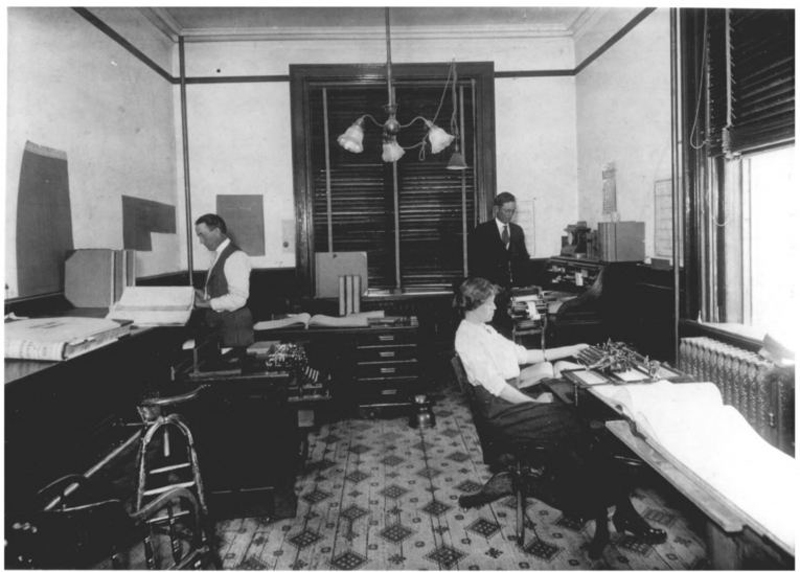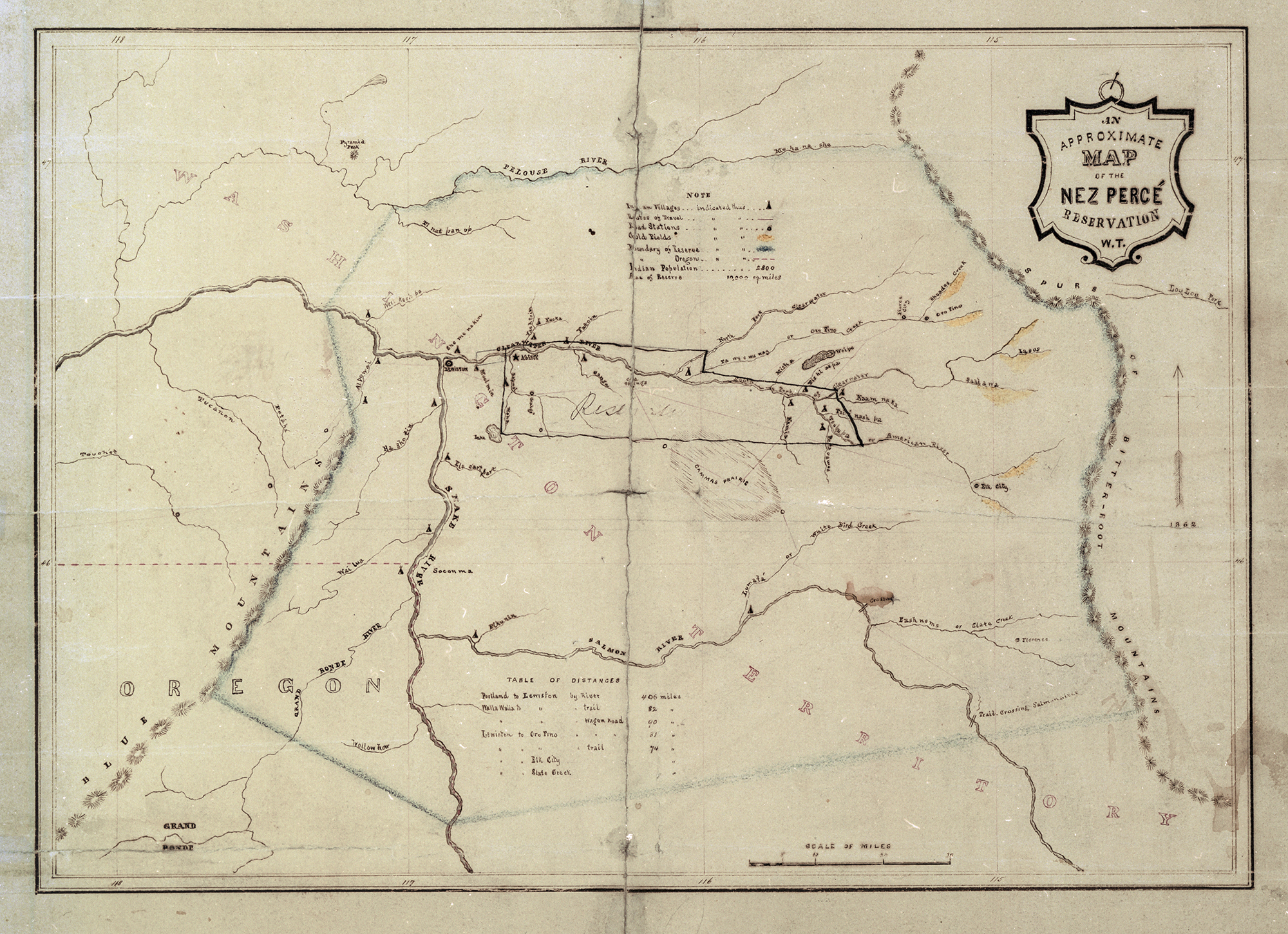Heppner, the self-styled "Gateway to the Blues," is located on Oregon Highway 74 on Willow Creek between the Blue Mountains and the Columbia River Gorge. The agricultural town is the county seat of Morrow County, and its historic County Courthouse was used as a refuge for residents fleeing a catastrophic flood in 1903, one of Oregon's deadliest natural disasters.
Before EuroAmericans began to pass through the region in the middle nineteenth century, Cayuse, Umatilla, and Walla Walla people frequently traveled on Willow Creek, but there were no permanent Native settlements in the region. In the Treaty of 1855 at Waiilatpu in the Walla Walla Valley, the tribes ceded 6.4 million acres of land in present-day northeastern Oregon and southwestern Washington, including the Heppner area, to the U.S. government.
The townsite along Willow Creek was originally named Stansbury's Flat after George W. Stansbury, who purchased a claim to the area in 1869 and was for several years the only permanent EuroAmerican settler in the region. Some evidence suggests that the area around Heppner was used as a seasonal feeding ground for cattle and sheep ranchers as early as 1858, and Stansbury's lonely cabin was a common stopping place through what was then a part of Umatilla County.
In 1872, Col. Jackson Lee Morrow, in partnership with businessman Henry Heppner, built a store at Stansbury Flat, thinking it a good place to establish a regional trading center. Several other businesses followed, and local residents debated a new name for the growing community. The townspeople landed on Heppner in recognition of the early commercial efforts of Henry Heppner. In 1873, a school and a post office were established, with George Stansbury appointed postmaster.
Early immigration to Heppner was primarily from Irish and Swedish communities, with the Irish farming on the eastern side of Willow Creek and the Swedes farming on the western side. The Irish eventually became the predominant cultural group in the Heppner area.
In the early 1880s, Col. Morrow was elected to the Oregon Legislative Assembly, where he led efforts to carve a new county out of Umatilla and Wasco Counties. The new county, created in 1885, was named Morrow in his honor, and the next year the town of Heppner won a close election with nearby Lexington to become the county seat. The town was incorporated on February 9, 1887.
Heppner connected by rail to the outside world in 1888 after the Oregon Railroad & Navigation Company built a spur that linked the town with the primary rail line along the Columbia River. The arrival of the railroad, celebrated with a jubilee, significantly increased the economic prospects of Heppner, which conducted a million dollars in trade in 1889, three times that of the previous year. Between 1880 and 1890, the town doubled in size, from 318 to 675 residents. The growth continued over the next decade, when the population nearly doubled again. By 1900, 1,146 people called Heppner home.
A tragedy struck the town in 1903 when a flash flood on Willow Creek slammed a forty-foot wall of water into Heppner, destroying approximately a third of the town and claiming the lives of 247 people. Many survivors subsequently moved away, and it would take many decades before the population would reach pre-flood levels.
Today, Heppner is protected from a repeat of such a catastrophe by the nearby Willow Creek Dam, constructed between 1981 and 1983 by the Army Corps of Engineers. While its primary purpose is flood control, the dam, by virtue of impounding Willow Creek into Willow Creek Lake, also created opportunities for outdoor recreation, fishing, and irrigation.
The largest employer in Heppner is Morrow County, with the primary industries being agriculture, timber, and manufacturing. In 2020, Heppner's population was 1,187, slightly higher than the number in 1900. Notable residents have included John Francis Kilkenny, judge on the U.S. District Court for the District of Oregon and the U.S. Court of Appeals for the Ninth Circuit; Mary Van Stevens, Heppner's first female mayor, elected in 1954; and Greg Smith, who has represented District 57 in the Oregon House of Representatives since 2002.
The Morrow County Courthouse, designed by Oregon architect Edgar M. Lazarus in the baroque style, was completed in 1903. Built from locally quarried dark blue basalt, the building is on the National Register of Historic Places and is Heppner’s defining architectural landmark. The Heppner Hotel, built in 1919 from a design by Oregon architect John V. Bennes, and the Gilliam and Bisbee Building, built in 1919, are also on the National Register of Historic Places.
Heppner hosts an annual Irish festival on St. Patrick's Day called A Wee Bit O’Ireland to commemorate the Irish roots of many founding citizens. The town also hosts the Blue Mountain Century Bikeway, an annual 108-mile bicycle ride in September.
-
Heppner, OR, 1910.
Heppner, OR, 1910 Courtesy Univ. of Oregon Libraries, pna_21726
-
![]()
Morrow County Courthouse.
Courtesy Oregon State Historic Preservation Office
-
![]()
OR&N engine #57, Heppner, Oregon.
Courtesy Oregon Hist. Soc. Research Lib., 004420
-
![]()
Heppner Flood damage on June 14th, 1903.
Oregon Historical Society Research Library ba010628
Related Entries
-
![Ancient Order of Hibernians (Portland Division)]()
Ancient Order of Hibernians (Portland Division)
The Ancient Order of Hibernians is an Irish Catholic fraternal organiza…
-
![Blue Mountains]()
Blue Mountains
The Blue Mountains, perhaps the most geologically diverse part of Orego…
-
![Heppner flood of 1903]()
Heppner flood of 1903
In the rolling wheat fields of north-central Oregon's Morrow County lie…
-
Morrow County Courthouse
The Morrow County Courthouse in Heppner is one of the oldest continuous…
-
![Native American Treaties, Northeastern Oregon]()
Native American Treaties, Northeastern Oregon
After American immigrants arrived in the Oregon Territory in the 1840s,…
Map This on the Oregon History WayFinder
The Oregon History Wayfinder is an interactive map that identifies significant places, people, and events in Oregon history.
Further Reading
DenOuden, Bob. "Heppner Flood of 1903." Oregon Encyclopedia: https://oregonencyclopedia.org/articles/heppner_flood/#.Wpnh8qjwaUk
Giffin, Kevin. "Lucky in Heppner" 1859 Magazine. Accessed online 3/2/18: https://1859oregonmagazine.com/explore-oregon/travel/lucky-in-heppner/
Heppner Chamber of Commerce Website. Accessed online 3/2/18: http://www.heppnerchamber.com/stpattysday
History of Umatilla and Morrow Counties. W. H. Lever, 1902.
National Register of Historic Places, Morrow County Oregon. Accessed online 3/2/18: http://www.nationalregisterofhistoricplaces.com/or/morrow/state.html



